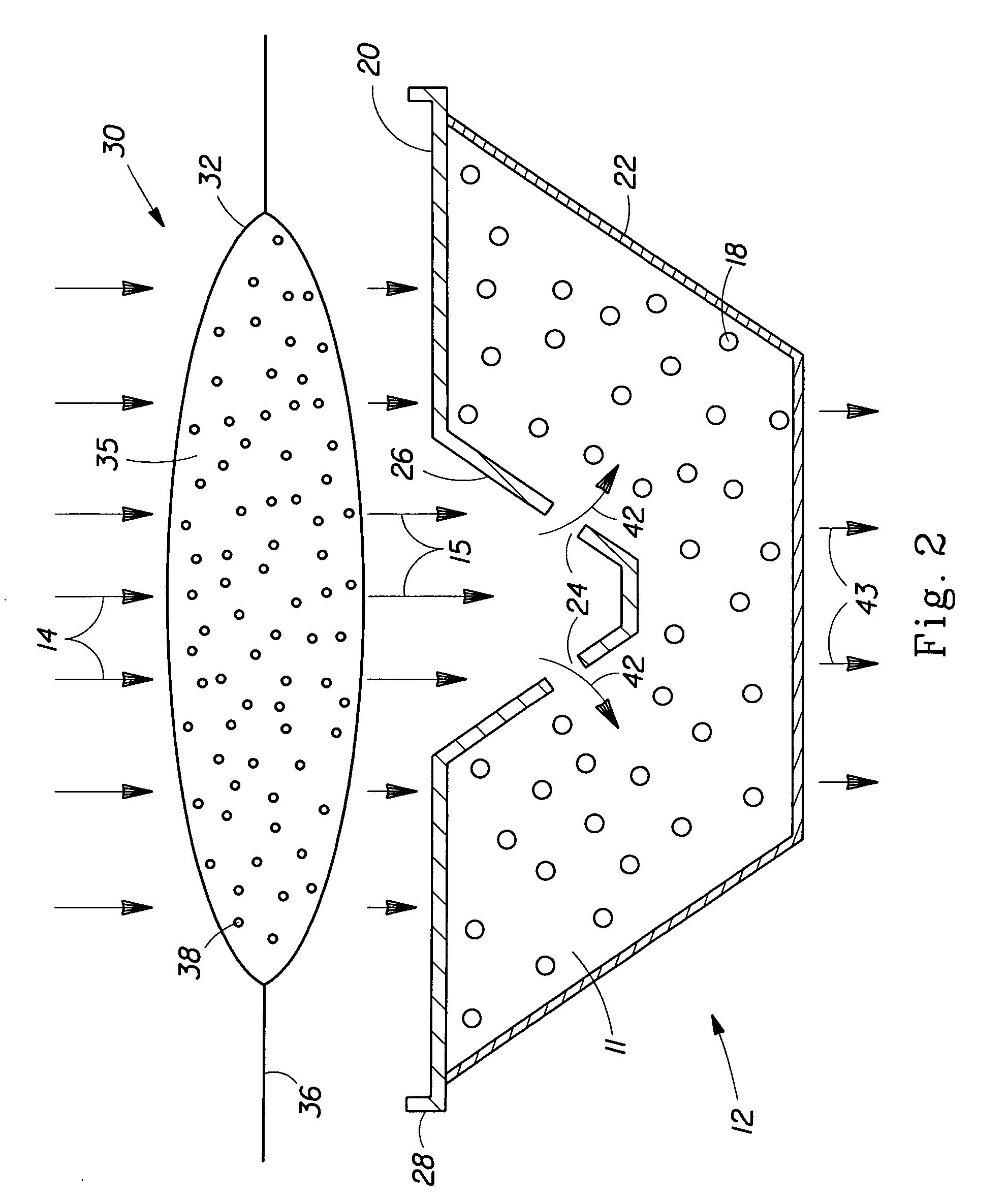Liquid infusion pods containing insoluble materials
a technology insoluble materials, which is applied in the field of liquid infusion pods containing insoluble materials, can solve the problems of wasting grounds, long and laborious process, and time-consuming and labor-intensive coffee operations
- Summary
- Abstract
- Description
- Claims
- Application Information
AI Technical Summary
Benefits of technology
Problems solved by technology
Method used
Image
Examples
example 1
[0102] A multi-layered polyethylene filter material, comprised of five layers, each layer having a permeability of approximately 1000 to 1500 cfm / ft2, is placed in a point bonding / lamination device known to those skilled in the art and embossed to create at least one first region and at least one second region. The first regions have a decreased permeability relative to the second regions. The resulting filter material is removed from the point bonding / lamination equipment and the permeability is determined to be approximately 45 to 75 cfm / ft2, as measured by the Analytical Method provided herein. The filter material is then used to construct the first filter member of an infusion pod, wherein the first regions account for about 45% of the area of the first filter member. In use, about 7 oz. of fresh liquid enters the infusion pod, resulting in dissolution of at least about 90% of a liquid dispersible material contained within in the pod in less than about 60 seconds.
example 2
[0103] A single layered polyethylene filter material having a permeability of about 500 cfm / ft2 is placed in an ultrasonic device known to those skilled in the art and selected portions of the filter material are bonded together to create multiple first regions and multiple second regions, the first and second regions having differing permeability. The resulting filter material is removed from the ultrasonic device and the permeability is determined to be about 90 cfm / ft2 to about 125 cfm / ft2, as measured by the Analytical Method provided herein. The filter material is then used to construct the first filter member of an infusion pod, wherein the first regions account for about 20% of the area of the first filter member. In use, about 9 oz. of fresh liquid enters the infusion pod, resulting in dissolution of at least about 75% of a liquid dispersible material contained within in the pod in less than about 120 seconds.
example 3
[0104] A multi-layered polyethylene / polyester filter material, comprised of 3 layers, each layer having a permeability of approximately 1000 to 1500 cfm / ft2 is spray coated with a starch and water solution to create a first region of decreased permeability. The water is evaporated off using techniques known to those skilled in the art and the permeability of the filter material is determined to be about 100 to 150 cfm / ft2, as measured by the Analytical Method provided herein. The filter material is then used to construct a first filter member of an infusion pod, wherein the coated first region accounts for about 96% of the area of the first filter member. In use, as the fresh liquid from the brewing device contacts the first region comprising the water-soluble starch coating, the coating dissolves, thereby increasing the permeability of the first filter member back to about 1000 to 1500 cfm / ft2. This gradual increase in permeability allows the fresh liquid to enter and remain in the...
PUM
 Login to View More
Login to View More Abstract
Description
Claims
Application Information
 Login to View More
Login to View More - R&D
- Intellectual Property
- Life Sciences
- Materials
- Tech Scout
- Unparalleled Data Quality
- Higher Quality Content
- 60% Fewer Hallucinations
Browse by: Latest US Patents, China's latest patents, Technical Efficacy Thesaurus, Application Domain, Technology Topic, Popular Technical Reports.
© 2025 PatSnap. All rights reserved.Legal|Privacy policy|Modern Slavery Act Transparency Statement|Sitemap|About US| Contact US: help@patsnap.com



